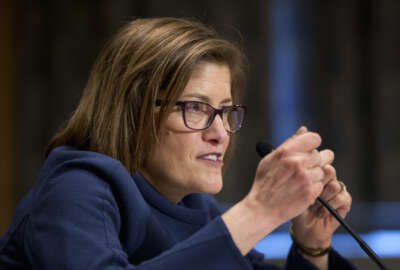
Paycheck peaked? Go West!
What does it take to get an average, round-shouldered, pot-bellied guy to feel sorry for George Clooney? Senior Correspondent Mike Causey says he gets it.
For the average mid-career civil servant, being sad because the big boss isn’t paid more is akin to the typical American male feeling sorry for George Clooney because his villa in Italy needs some new tiles on the roof. It’s hard to feel their pain. And yet …
Despite this year’s modest across-the-board federal pay raise and adjustments in locality pay, hundreds, maybe thousands of feds at the top of the civil service pay scale still aren’t being paid what is due them. Which is more, in some cases quite a bit more, than the $160,300 pay ceiling. Last year it was even worse. Many feds in high-wage cities who were at the top of GS-15 didn’t get raises. They were “stuck” at $158,500.
By law, top GS pay is “limited to the rate for Level IV of the Executive Schedule. “ Right now that is $160,300.
The metro Washington area has the highest concentration of high-grade (that’s GS grade) feds in the nation. In the Washington-Baltimore locality pay area, the pay cap impacts only those in steps 9 and 10 of GS-15. But “only” is a relative term, because it takes in lots of people who have been in the grade for a long time. The situation is worse in other high locality wage cities. In the San Francisco-San Jose-Oakland locality pay area, the GS-15 cap extends from step 10 down to step 6. In other words, everybody in that grade at those steps makes the same $160,300 salary although some have been in grade, and in government much longer. In other high-wage cities — Houston and New York City to name a couple — the pay cap, despite the January 2016 pay raise hits more people each year.
As one executive said, “I can’t take this much longer. It was bad enough during the pay freeze, but now that we are getting at least token raises … the cap really hurts. I see my peers in the private economy making a lot more money for doing jobs very similar to mine. “ In some cases, he said, “I have a lot more responsibility and operate under greater constraints … but they get the money. If the cap isn’t lifted next year, substantially, I’m outta here in a heartbeat.”
The pay cap has been around a long time. But before 1990 it didn’t matter as much because it didn’t impact as many people. Before locality pay came along, most feds (other than in Alaska, Hawaii and the Virgin Islands) were paid the same salary for the same job and grade level whether they did it in D.C., Indianapolis or Seattle. A GS-12 step 4 was paid the same whether he or she worked in Maine or Florida. With locality pay, all that has changed.
But with locality pay, raises were often handed out on a city-by-city (locality) basis. After locality pay kicked in, workers in different areas started getting different raises. The increases are supposed to be based on the going rate for similar jobs in each locality area. That didn’t work out as planned because the introduction of locality pay. Presidents Bill Clinton and Barack Obama proposed freezes as well as raises smaller than those intended by the pay law. In between them, President George W. Bush didn’t freeze federal pay, but he followed the practice of low-balling annual pay raises. Bottom line, nearly 15 years after the pay “reform” became law, even the government admits that many feds — especially those in the upper grades — could be making a lot more money in the private sector. For many at the top of the GS-15 scale that adds insult to injury, even though many people in and outside of government would be happy to be capped at $160,300.
Nearly Useless Factoid
Cheetahs have between 2,000 and 3,000 spots on average.
Source: Ask.com
Copyright © 2025 Federal News Network. All rights reserved. This website is not intended for users located within the European Economic Area.
Mike Causey is senior correspondent for Federal News Network and writes his daily Federal Report column on federal employees’ pay, benefits and retirement.
Follow @mcauseyWFED





